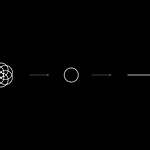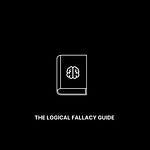Welcome to the 198 new members of the curiosity tribe who have joined us since Friday. Join the 29,071 others who are receiving high-signal, curiosity-inducing content every single week. Share this on Twitter to help grow the tribe!
Today’s newsletter is brought to you by M1 Finance!
M1 Finance is an all-in-one finance super app - allowing you to invest, borrow, and spend on one easy-to-use, technology-driven platform. I’m a huge fan of their smart dollar-cost averaging features, which take the emotions out of your investment process. M1 has low minimums and offers smart auto-invest, zero commission trades, and so much more. I love the platform and know you will too!
Join thousands of other happy customers and open an M1 account today!
Today at a Glance:
Mental models and maps are representations of reality. They take the complexity of reality and reduce it down to something more manageable.
“The map is not the territory” is a meta mental model for assessing and understanding the applicability of mental models. If you don’t understand and appreciate a model’s applicability (or lack thereof) to a given situation, you are certain to get lost.
Humans have a tendency to over-apply mental models after we see them work. Awareness and constant reflection is the path to avoid this tendency (and avoid getting lost).
When Mental Models Attack
If you’ve been following me on Twitter (or if you’re a long-time subscriber to this newsletter), you know that I enjoy writing about mental models.
If you’re new to the term, mental models are simply representations of how the world works. The world is filled with complexity, so we constantly create mental models to help us simplify the complexity by reducing it down to a more manageable representation of fact.
In most of my writing, I cover the many successes of mental models - they can be extremely useful tools when applied appropriately. But unfortunately, when misapplied, these "useful" models become anything but.
My key point? Mental models are only as good as the soundness of their application. Knowing how and when to apply the different models in your toolkit is just as important as having them in your toolkit in the first place.
Today, I’d like to talk about a mental model to help you understand the failings of mental models.
Very meta, I know…
“The Map is Not the Territory”

"The Map is Not the Territory" is a core, foundational mental model for assessing and understanding the applicability of mental models. It's a critical addition to your decision-making toolkit. If you don’t understand and appreciate a model’s applicability (or lack thereof) to a given situation, you are certain to get lost.
Let’s begin with some basics. First off, for the purposes of this piece, I will use the terms “map” and “mental model” interchangeably. Both terms can simply be thought of as representations of reality. They take the complexity of reality and reduce it down to something more manageable. Because of the reduction in complexity, they enable faster, higher-powered decision-making.
But there are two potential problems:
What if you are using the wrong map? Trying to navigate Ohio with a map of Mississippi seems…bad.
What if the map is overly-simplified? Trying to navigate a 100-yard stretch of Amazon River rapids with a map of the entire 4,000+ mile river seems…bad.
In both situations, the map (your mental model) is not an accurate, helpful representation of the territory (the problem you are looking to solve). Pushing forward in spite of this would be dangerous, perhaps even deadly (in the case of the Amazon rapids!).
“The map is not the territory” can be thought of as a simple, intuitive reminder (or mantra?) to constantly understand, evaluate, and critique the validity and applicability of your mental models to a given scenario.
History
Where did this concept - of the map, the territory, and their potential mismatch - originate?
Well, the general concern has been around for centuries. Explorers have long known about the dangers of over-reliance on maps when venturing into new territories. All were aware that early cartographers took certain...liberties. Claudius Ptolemy - the famed Roman mathematician, astronomer, and geographer - was known for filling in blanks on his maps with reckless artistic license. Basically, if he didn’t know what went into a blank area on a map, he just…made it up.
As you can imagine, these maps had limited usefulness. They were not accurate representations of the territories they were intended to simplify.
The concept was popularized as a mental model by Polish-American mathematician Alfred Korzybski in 1931.
In a paper on mathematical semantics, he cemented the concept by dictating two related, critical points:
"A map is not the territory."
"A map may have a structure similar or dissimilar to the structure of the territory."
In simple terms:
Maps are representations of reality, not actual reality.
The quality of this representation of reality can vary greatly.
Korzybski was pointing out the risk of relying on maps too heavily and the importance of having awareness of their quality and limits.
A Hypothetical Example
So we have covered the theory, but how does this apply to your life?
The world is complex. To process this complexity, you create and use mental models and maps - simplified representations of complex reality. But if you're using a flawed map, you're going to get lost (or worse).
Let's look at a fictional example to bring this to life.
Imagine you are the CEO of a widget company. Everything is great. Your market is expanding, your business is growing and stealing share from competitors. Your stock price is soaring. Life is good. You’ve made it.
But then, a crisis: the Consumer Product Safety Commission (a government agency) issues a formal report calling one of your widgets a safety hazard (seriously, this happens).
You snap into action, ordering a halt of production and an immediate product recall. You launch an investigation into the safety risk. The investigation quickly finds the issue (which is relatively minor). You work with your team to correct it and begin production again. It's a hit to the financials, but not a debilitating one. The fast action minimized the damage.
You’re lauded for your response. The financial media holds you up as a gold standard. You go on CNBC and tell the world how other CEOs can adopt your incredible crisis response strategy when they encounter their next crisis.
Reflecting over a glass of wine, you pat yourself on the back for a job well done. Consciously or not, you've created a mental model of how to manage a product crisis.
The model: If a product crisis hits, you have to act immediately. First, announce an immediate halt of production and issue a product recall. Next, investigate and fix the problem. Finally, restart production and start your victory lap!
Simple, right? You settle back into your regular day-to-day as CEO, hoping you’ll never have to encounter a similar crisis, but knowing you are prepared if you do.
Two years later, a blogger posts a piece accusing one of your widgets of being environmentally harmful. It starts to circulate on social media and makes its way onto your desk.
“Here we go again,” you sigh. But you have a mental model for just this situation! You proceed accordingly:
Halt production
Issue product recall
Investigate and fix
Restart production
CNBC victory lap
As it turns out, your investigation reveals that there was no merit to the accusation. Your widget was perfectly fine. The pre-emptive production halt and recall were seriously damaging to your company's financials, particularly considering they were executed on the basis of a baseless claim.
You're condemned for your response. The financial media drags you through the mud. No CNBC victory tour this time. Jim Cramer says you are the least capable CEO in the Fortune 500.
But what happened here?
You applied the same model in each crisis, but the result was very different. The issue, which may feel obvious, is that you applied the same model in dealing with an accusation from a blogger as you did in dealing with a comprehensive report from a government agency.
The “map” you created in the first crisis was not an accurate representation of the reality of the second crisis. The map was not the territory, so the map was rendered useless! Without proper assessment of the applicability of your mental model to the situation, you wound up lost (and damaged).
Humans have a tendency to over-apply mental models after we see them work. It is hard-wired into our genetic code. You were a victim of this tendency.
So what are a few areas where we see this mental model in action.
Business & Startups
The business world is a fertile breeding ground of misapplied maps and mental models. Leaders form maps in one role or context, become overly confident in their application (having seen them work), and fail when applying them in a new, different context.
Farnam Street covered a classic example in a terrific article on the subject:
By most accounts, Ron Johnson was one the most successful and desirable retail executives by the summer of 2011…Johnson’s success at Apple was not immediate, but it was undeniable. By 2011, Apple stores were by far the most productive in the world on a per-square-foot basis, and had become the envy of the retail world.
With that success, in 2011 Johnson was hired by Bill Ackman, Steven Roth, and other luminaries of the financial world to turn around the dowdy old department store chain JC Penney. The situation of the department store was dour: Between 1992 and 2011, the retail market share held by department stores had declined from 57% to 31%.
The idea was to take the best ideas from his experience at Apple; great customer service, consistent pricing with no markdowns and markups, immaculate displays, world-class products, and apply them to the department store.
The idea failed almost immediately…What went wrong in the quest to build America’s Favorite Store? It turned out that Johnson was using a map of Tulsa to navigate Tuscaloosa. Apple’s products, customers, and history had far too little in common with JC Penney’s. Apple had a rabid, young, affluent fan-base before they built stores; JC Penney’s was not associated with youth or affluence. Apple had shiny products, and needed a shiny store; JC Penney was known for its affordable sweaters. Apple had never relied on discounting in the first place; JC Penney was taking away discounts given prior, triggering massive deprival super-reaction.
There are many archetypes of this general type of failure:
CEO tries to apply same roadmap to new business turnaround as in prior business turnaround. It fails.
Startup founder tries to apply same approach to growth as in prior startup. It fails.
They all share one common trait: the map is not the territory!
Investing
Investors are frequent victims of the tendency to over-apply models that worked in the past.
Imagine a successful investor evaluates a potential retail turnaround, believes in the story, invests in the business, and wins big. They have formed a mental model for retail turnarounds - they have seen it work, and now want to see it work again.
The investor has become a hammer searching for a nail.
The next time a retail turnaround opportunity comes across their desk, they are likely to see a nail - even if the opportunity is clearly different (a screw!). Treating it the same as the first option, they lose big.
The map is not the territory!
How to Avoid Getting Lost
The study of mental models creates an inherent tension between two concepts:
Humans create mental models to simplify complexity. They are useful when applied appropriately.
Humans have a tendency to over-apply models that have worked in the past, leading to failures.
This becomes an optimization problem: How do we optimize (1) and avoid (2)? Awareness and constant reflection.
Awareness
You have to be ruthlessly honest in assessing the validity and integrity of your mental maps and models as they relate to new scenarios.
Think of your mental models as tools in a toolkit. As Tren Griffin pointed out on Twitter, having mechanisms to evoke these tools in the appropriate scenarios is the key. You don’t walk around the house with your hammer in hand, ready to strike - you find the problem, accurately assess it, and determine the tool in your toolkit that is best suited to solve it.

Reflection
Reflect on your daily application of models - the hits and the misses. Harness a community for this reflection. Learning circles can be a powerful force.
As the legendary Jim O’Shaughnessy pointed out below, “without error correction, a model will decay into uselessness.”


To win: Be aware, reflect often. And always remember: the map is not the territory!
Sahil’s Job Board - Featured Opportunities
SuperFarm - VP/Director Account Ops, Scrum Master (NEW DROP!)
Launch House - Community Manager, Community Lead (NEW DROP!)
AbstractOps - Head of Engineering (NEW DROP!)
Commonstock: Community Manager, Social Media Manager, Marketing Designer, Backend Engineer (NEW DROP!)
Free Agency - Chief of Staff
Avicado - Marketing Manager
The full board can be found here!
We have had a bunch of hires through the board and the results for featured roles have been awesome! If you are a high-growth company in finance or tech, you can use the “Post a Job” button to get your roles up on the board and featured in future Twitter and newsletter distributions.
That does it for today. Join the 29,000+ others who are receiving high-signal, curiosity-inducing content every single week! Until next time, stay curious, friends!














